Dolphins: Braniacs of the Sea by Dr. Lori Marino, Executive Director, Kimmela Center
March 7, 2015
Science Saturday at IHMC is all about igniting the imagination of 3rd - 5th graders with hands-on science. In March, Dr. Lori Marino, an internationally recognized expert in dolphin and whale evolution and intelligence, presented "Dolphins: Brainiacs of the Sea." A total of 82 Marion County students learned about animal intelligence and how to quantify it.
-

Science Saturday at IHMC is all about igniting the imagination of 3rd - 5th graders with hands-on science. In March, Dr. Lori Marino, an internationally recognized expert in dolphin and whale evolution and intelligence, presented "Dolphins: Brainiacs of the Sea." A total of 82 Marion County students learned about animal intelligence and how to quantify it.
-
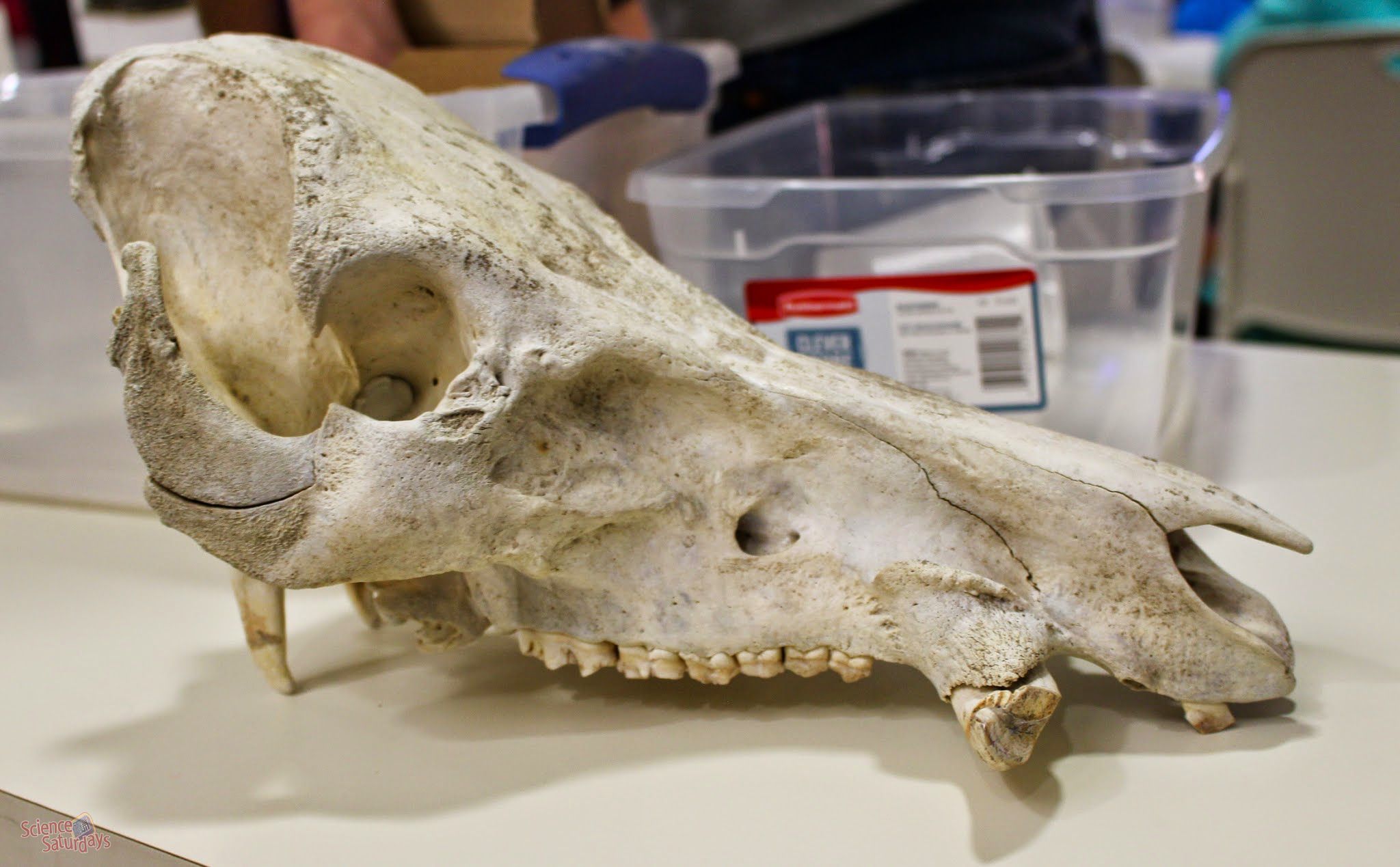
The Silver River Environmental Education Center loaned IHMC 12 different animal skulls for this event, and the University of Florida loaned IHMC a bottlenose dolphin skull. (Shown in this image is a wild hog skull from the Silver River Museum.)
-
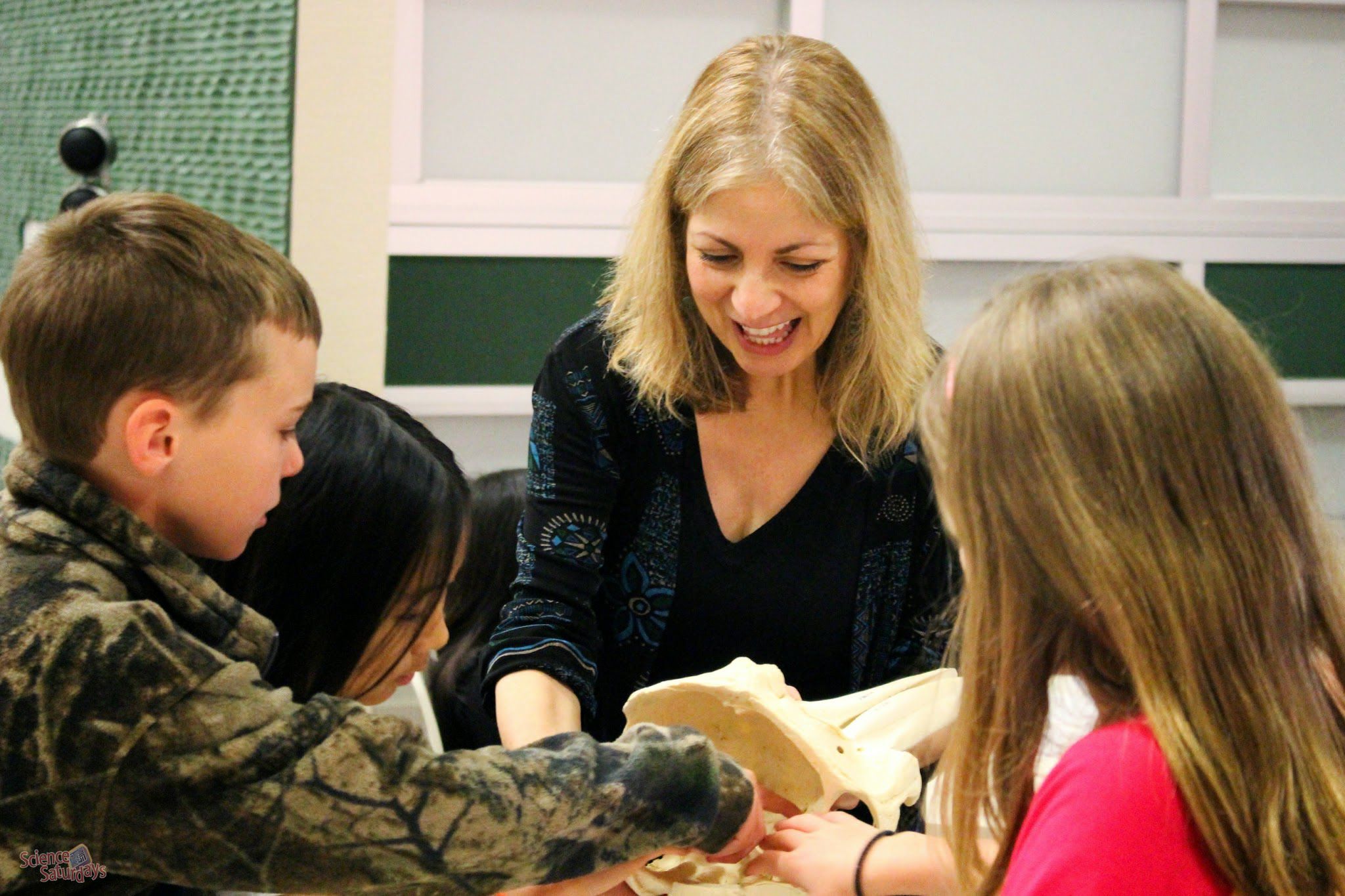
Students had the opportunity to contrast the cranial volume of dolphins with that of 12 other animals and to see for themselves that dolphins have very large brains. In this photo, students are impressed by the large cranial cavity in which the dolphin brain sits.
-
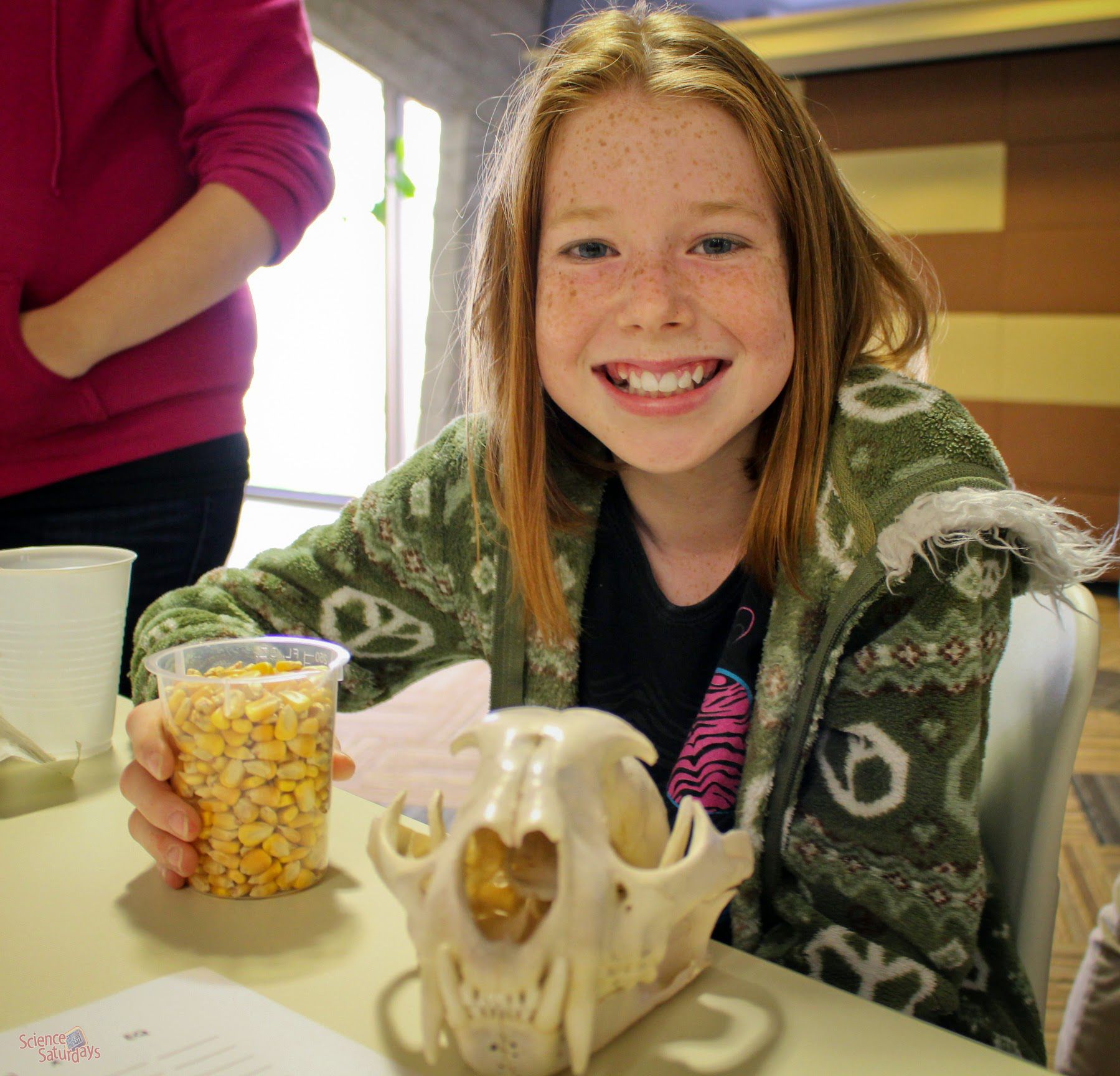
Students learned how to measure and compare estimates of brain size, by using a technique that Lori developed for her doctoral research. They poured corn into the cranium of each of skull. In this case the skull belonged to a cougar. Corn was poured in through the foramen magnum, where the spinal cord would have connected to the brain.
-
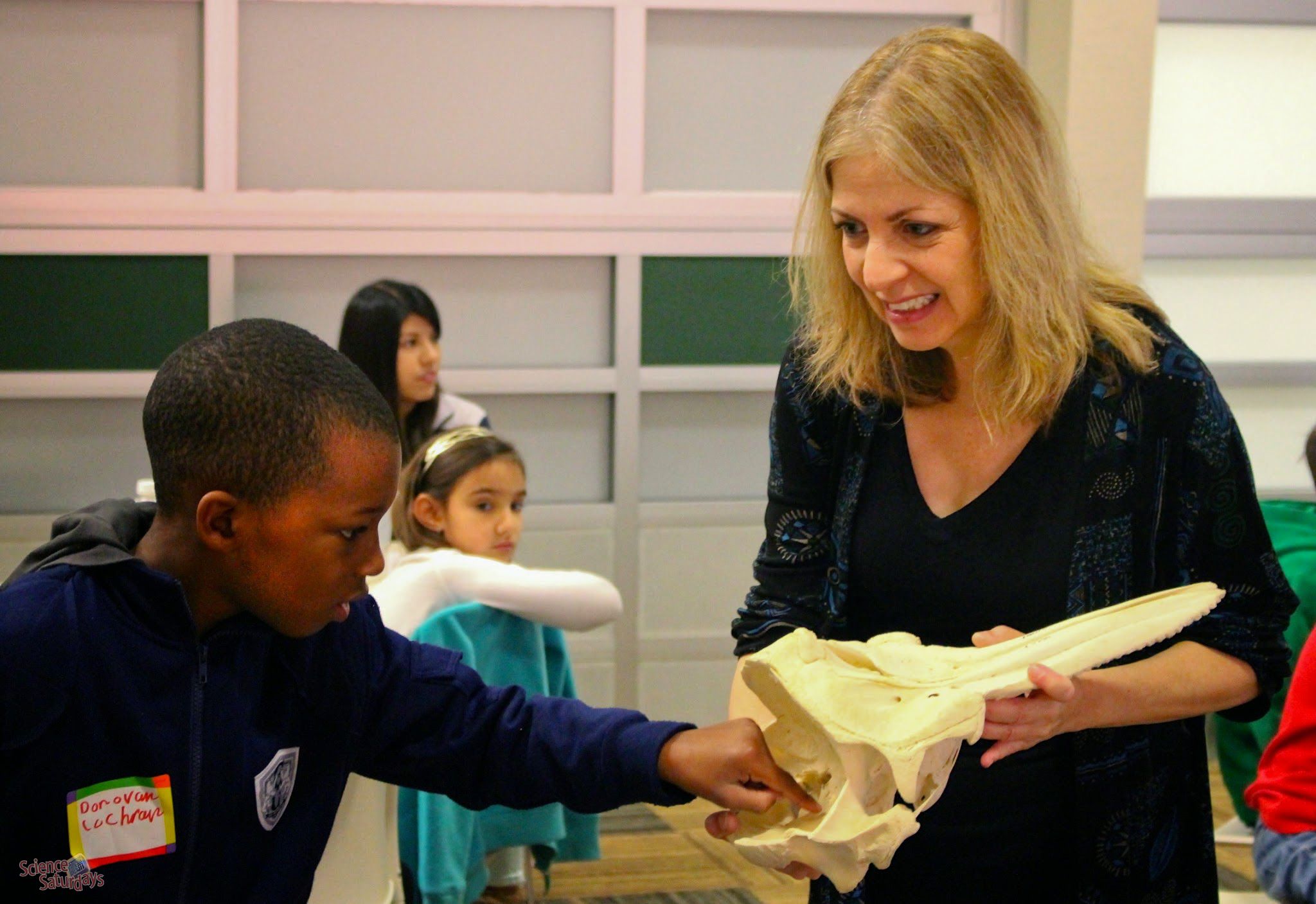
This is the inside of the dolphin cranium , where the large brain would sit. As you can see, the dolphin brain would be several times bigger than Donovan's fist.
-
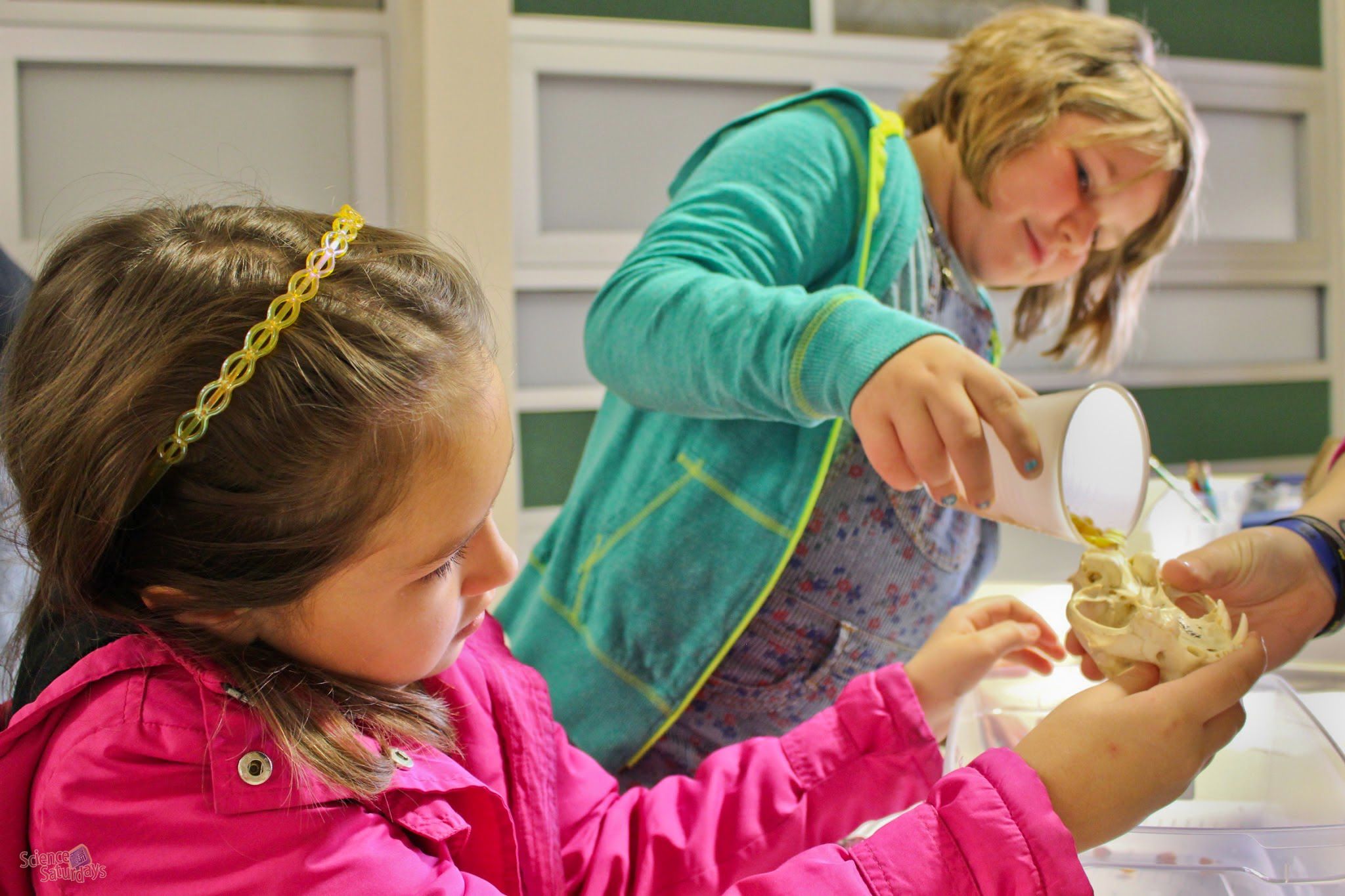
How do we estimate the size of the brain from the inside of the cranium? Students worked in groups to carefully pour as much corn into the cranium as they could fit, making sure that the space was completely full.
-
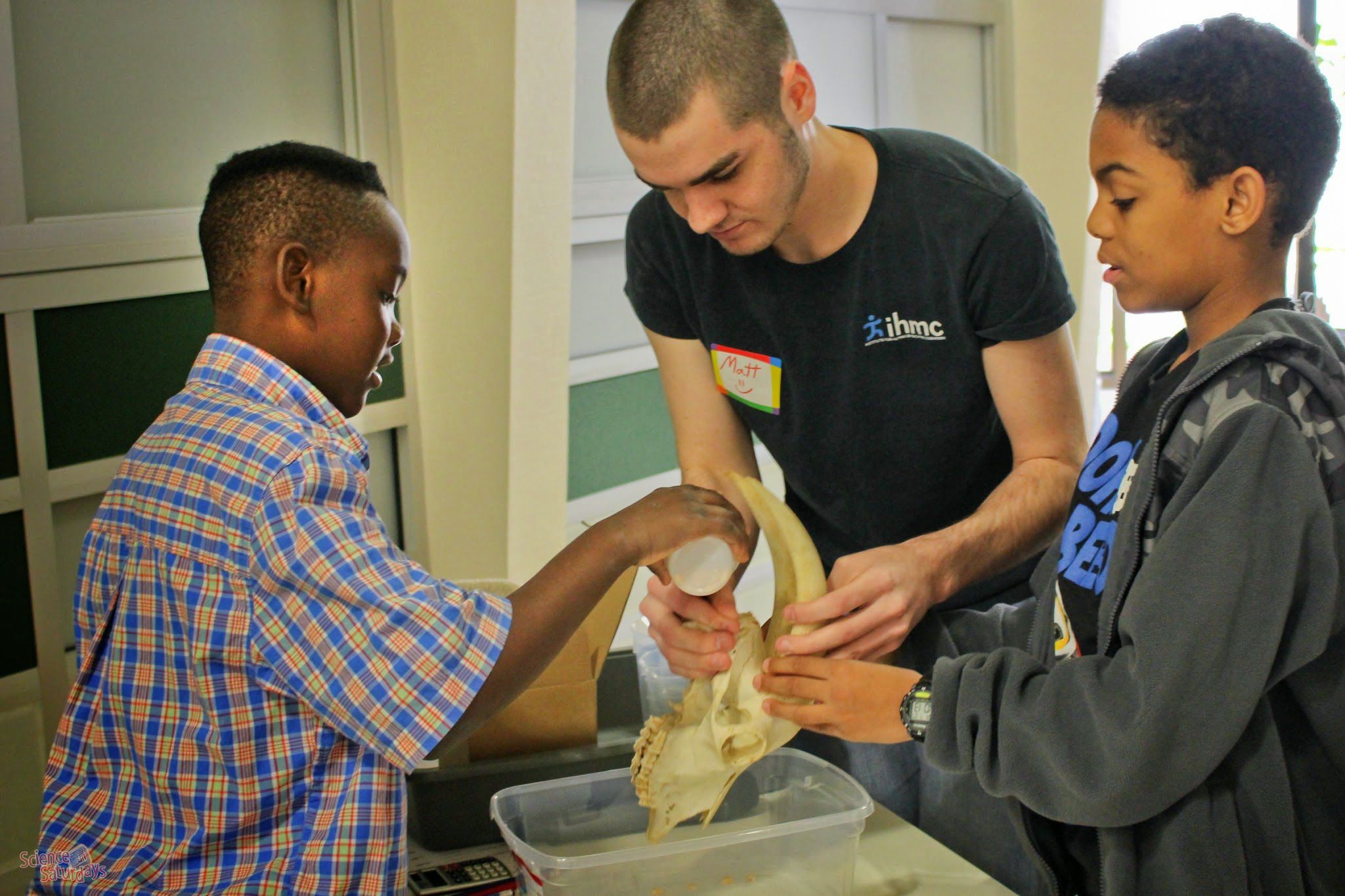
Volunteer Matt is helping two boys to measure the cranial volume of a goat.
-
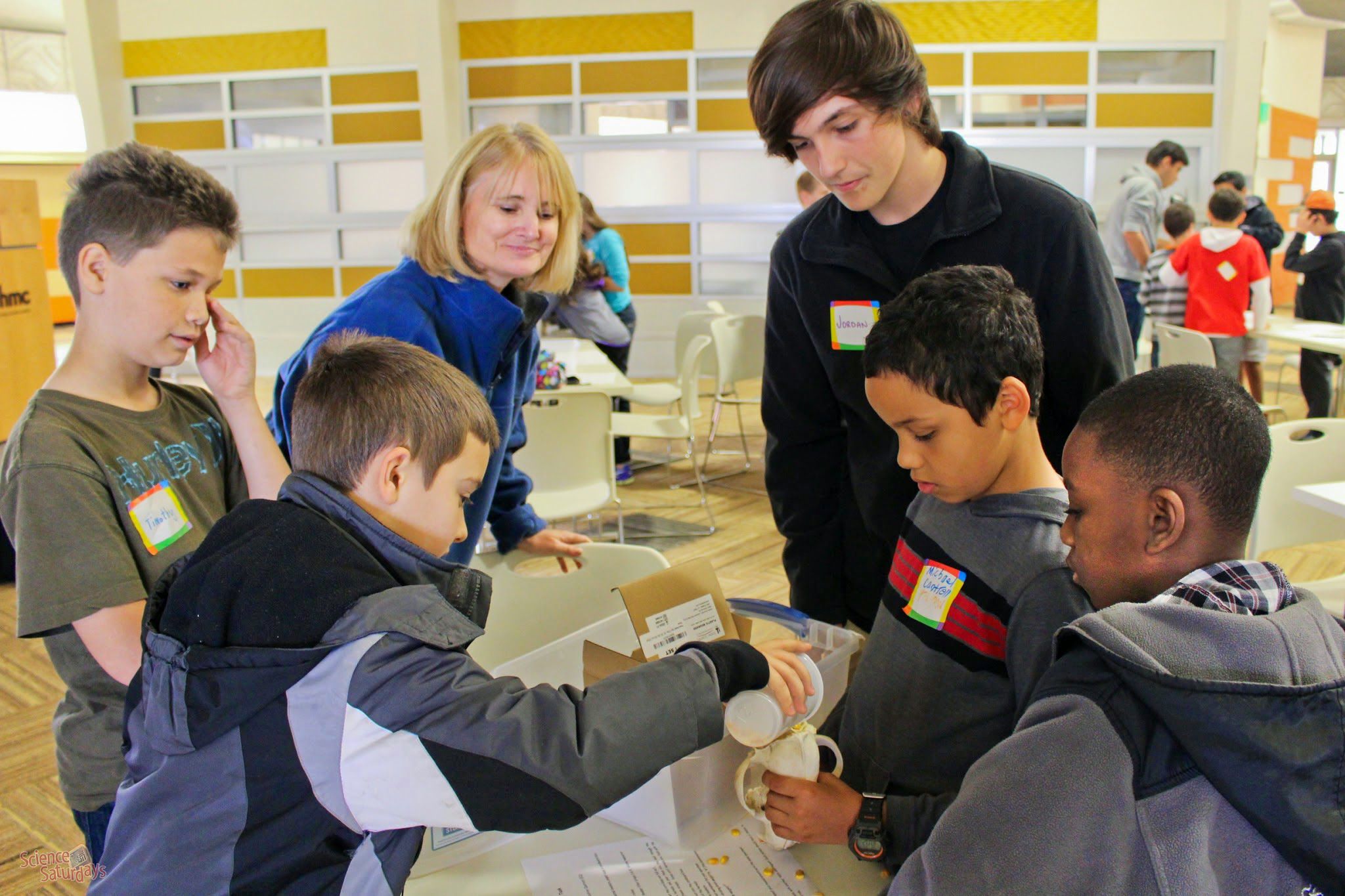
Volunteer Jordan is helping another group to measure the brain volume of a bobcat.
-
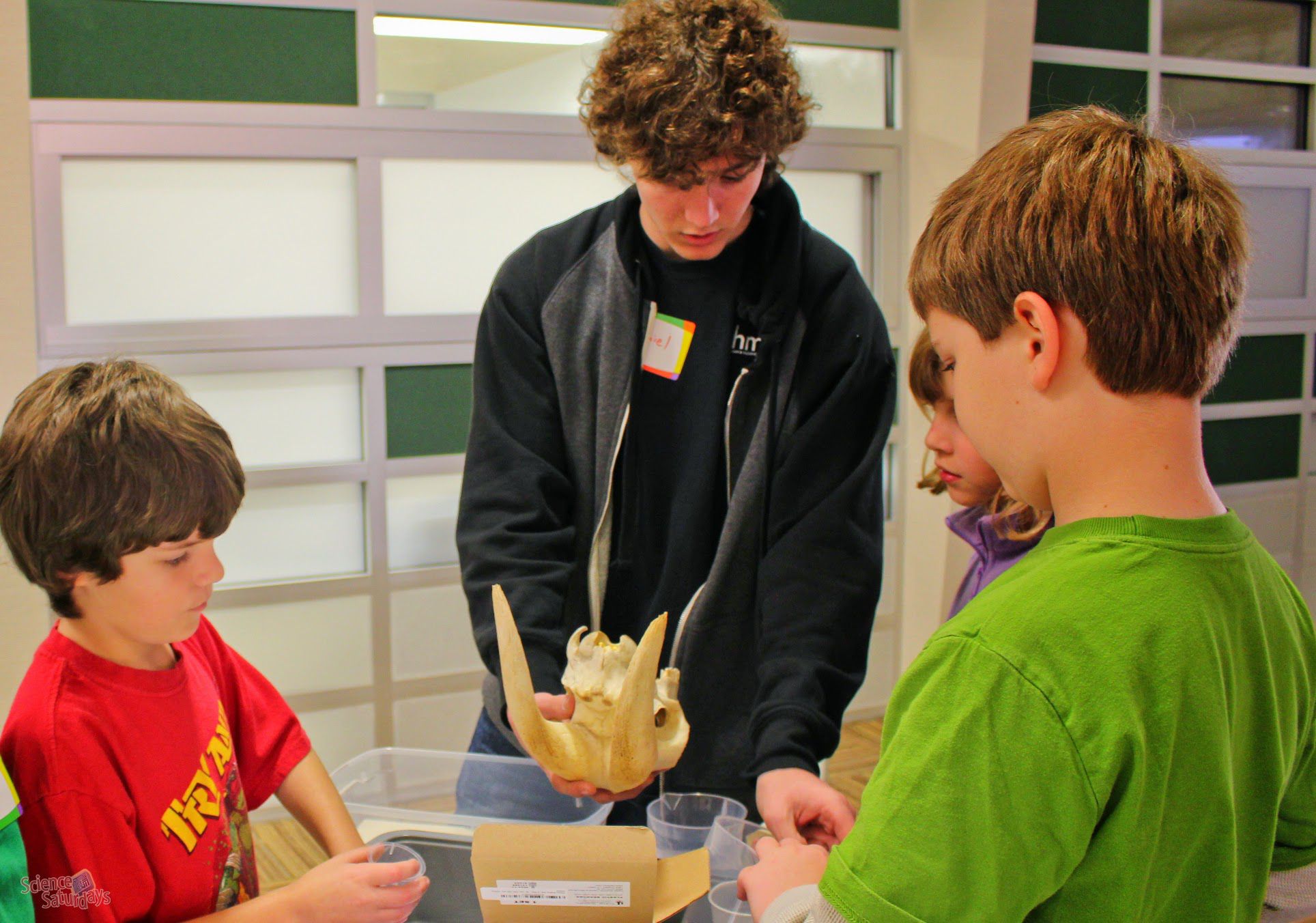
After one student in each group filled the cranium with corn, another student transferred it to a graduated beaker.
-
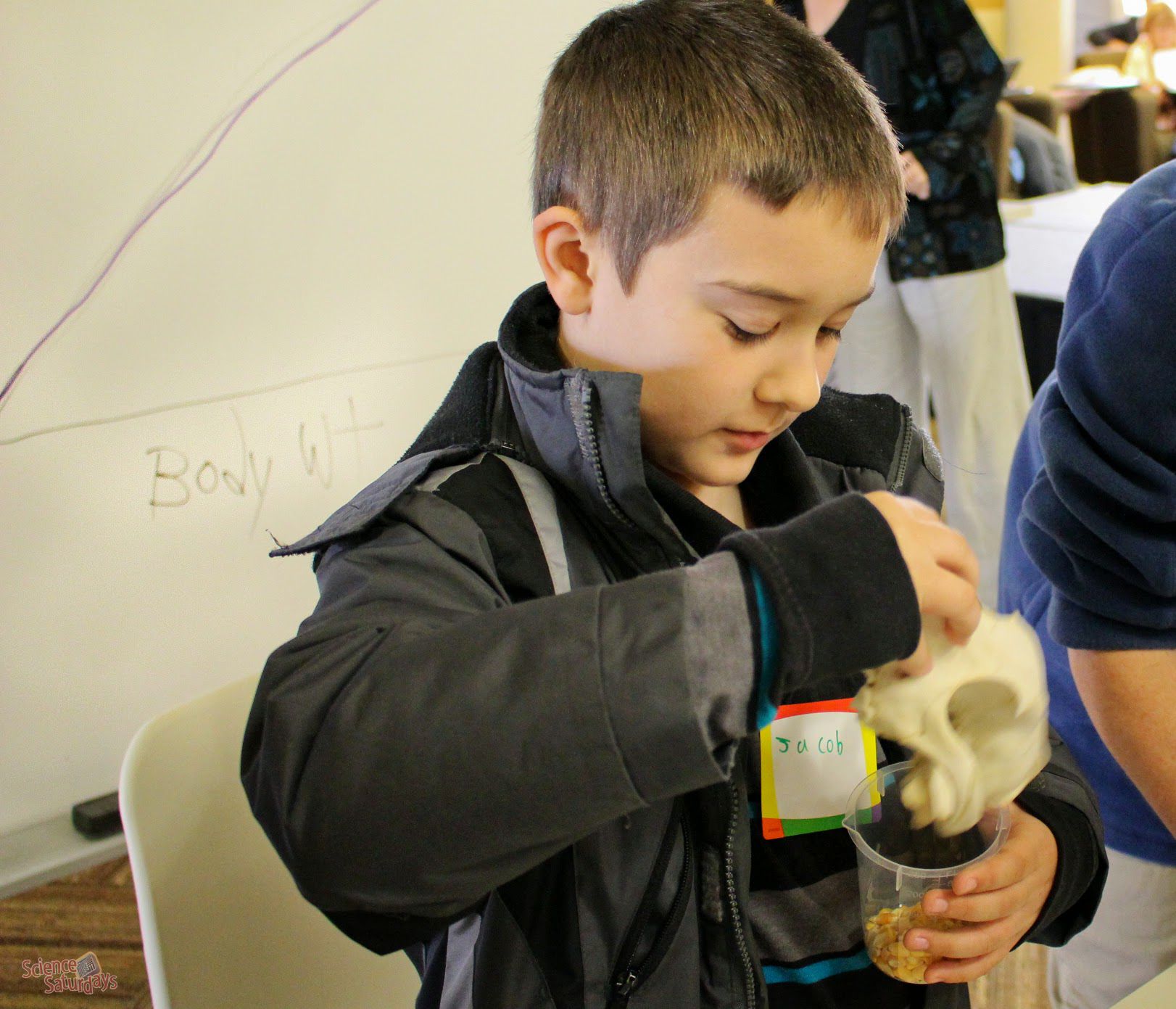
Jacob is pouring the corn from the rhesus monkey into his beaker, and then the group will determine the volume of the brain in milliliters.
-
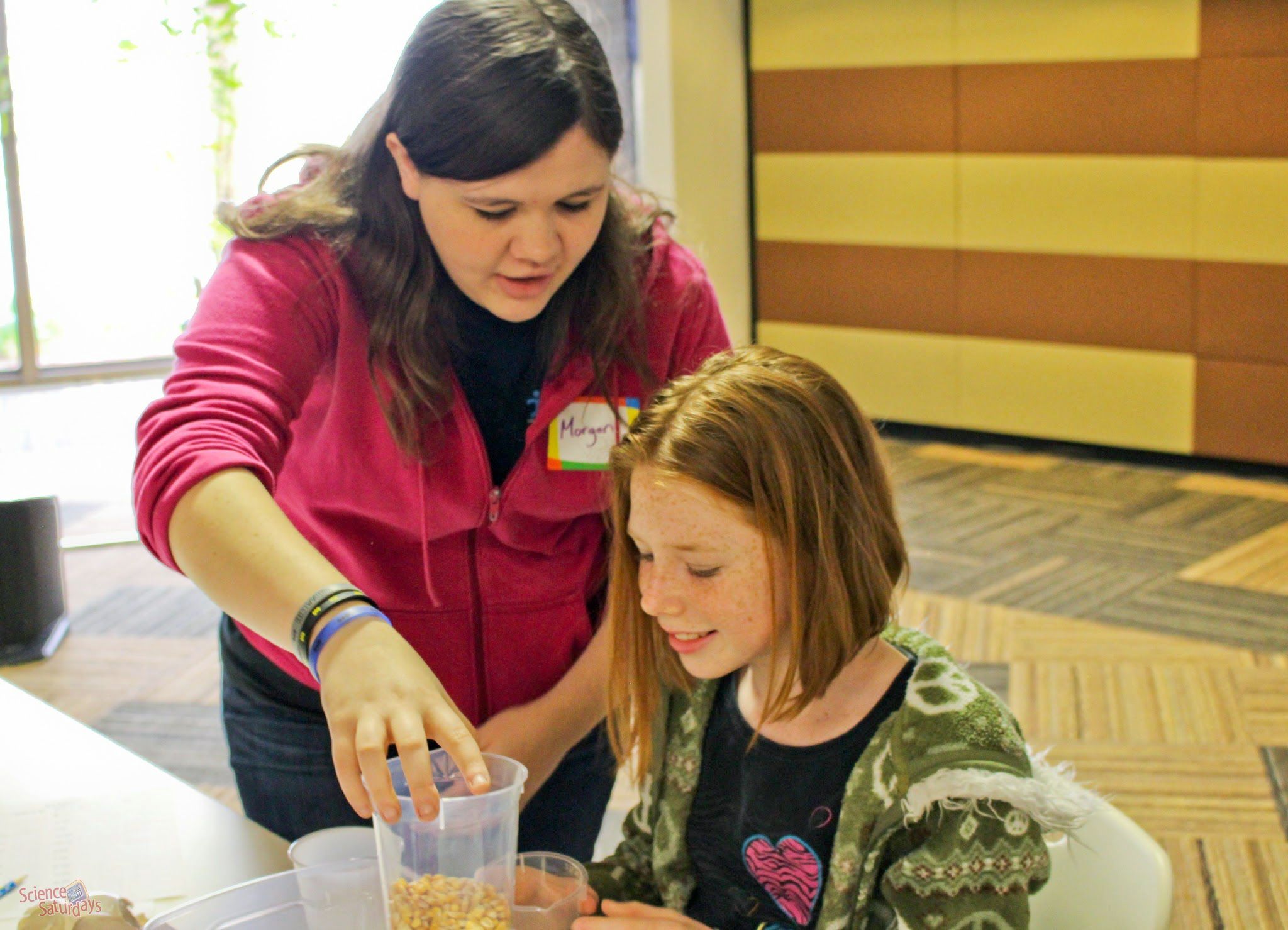
The volumes of the brains varied considerably for the different animals.
-
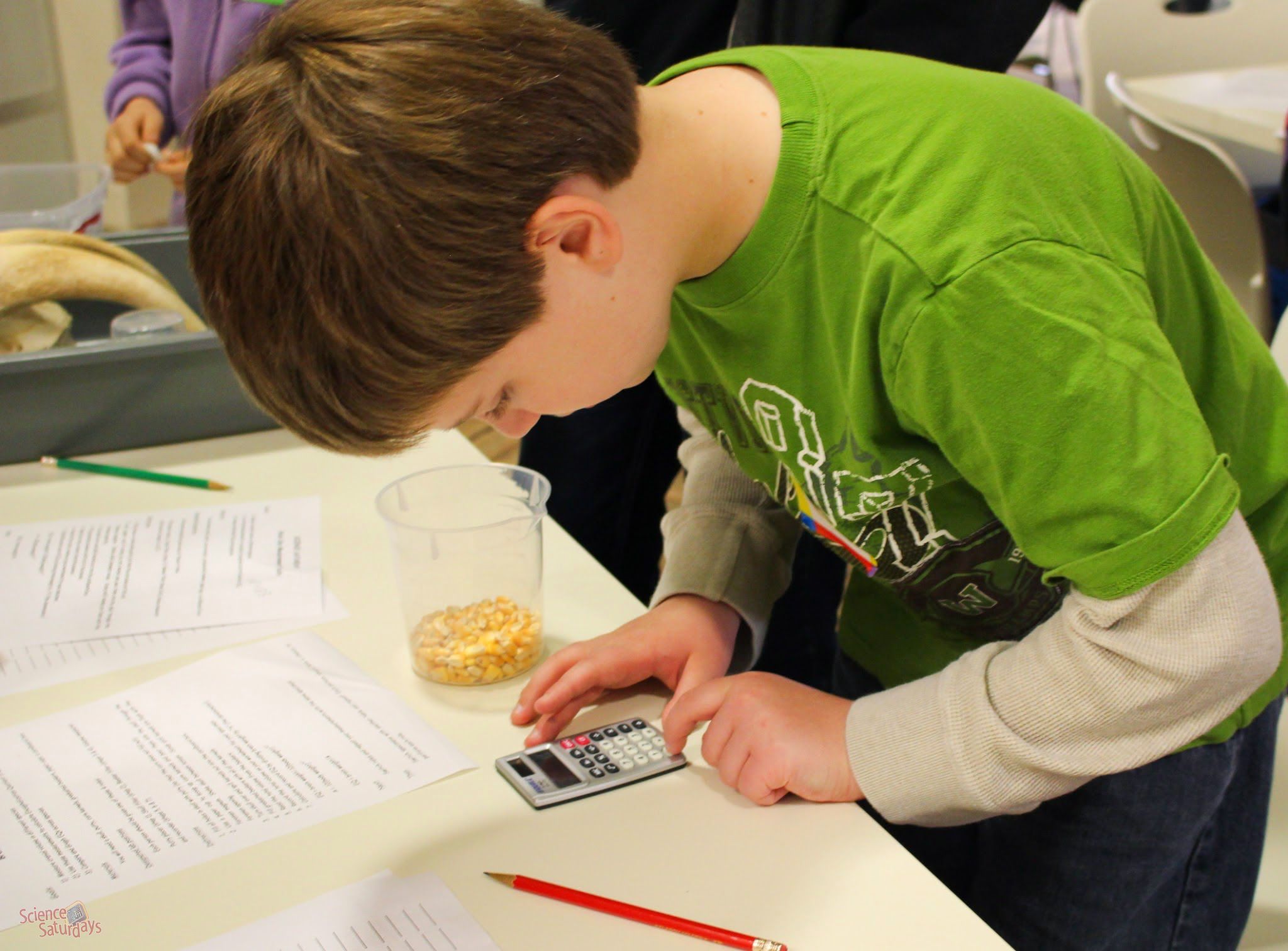
However, brain volume alone is not the measure we were looking for. The ratio of brain volume to body weight is needed to compute the encephalization quotient (EQ), which is is used to compare intelligence across species.
-
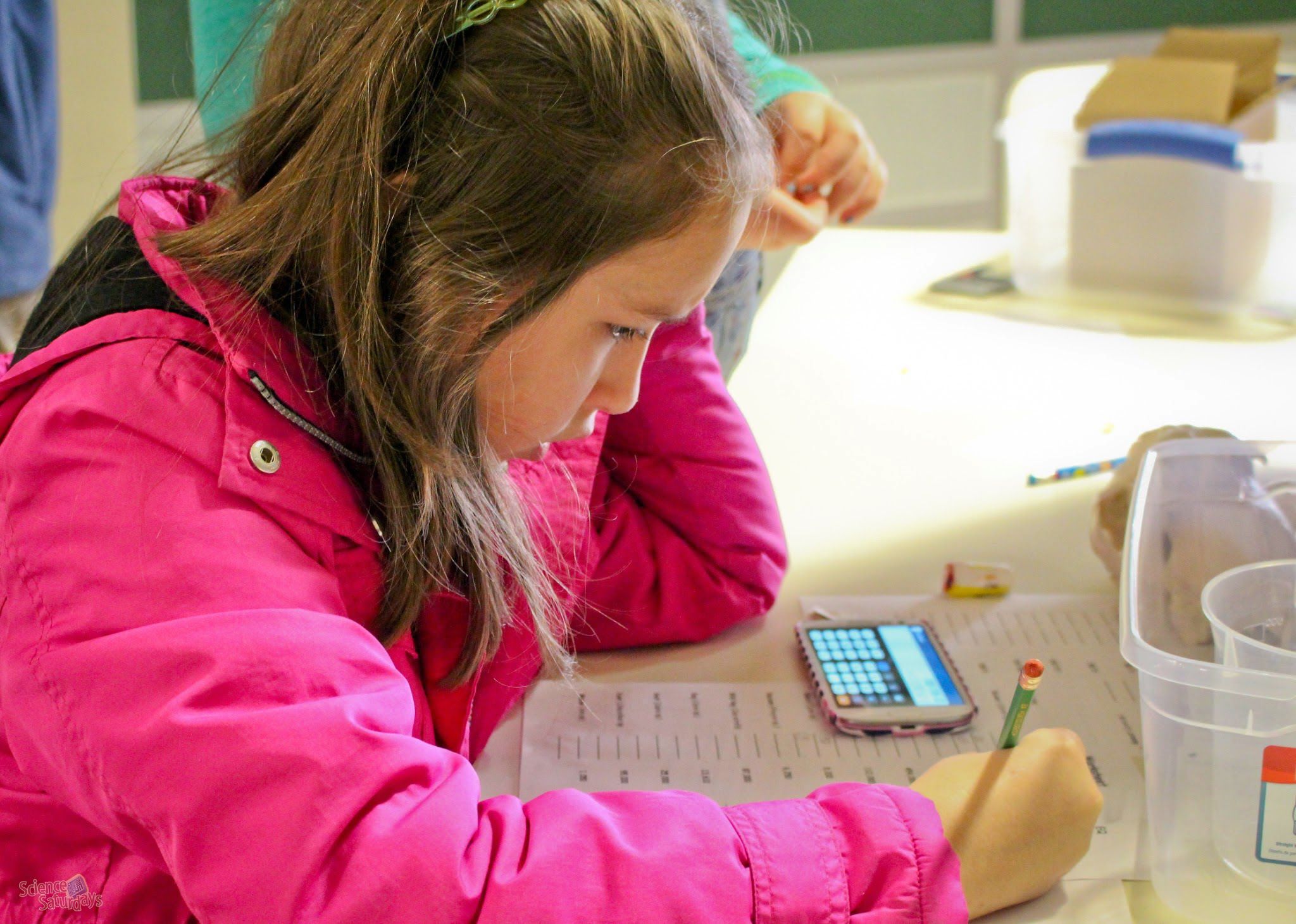
Each group of students measured the skulls and calculated the EQ for several different animals, and filled the numbers in on a worksheet.
-
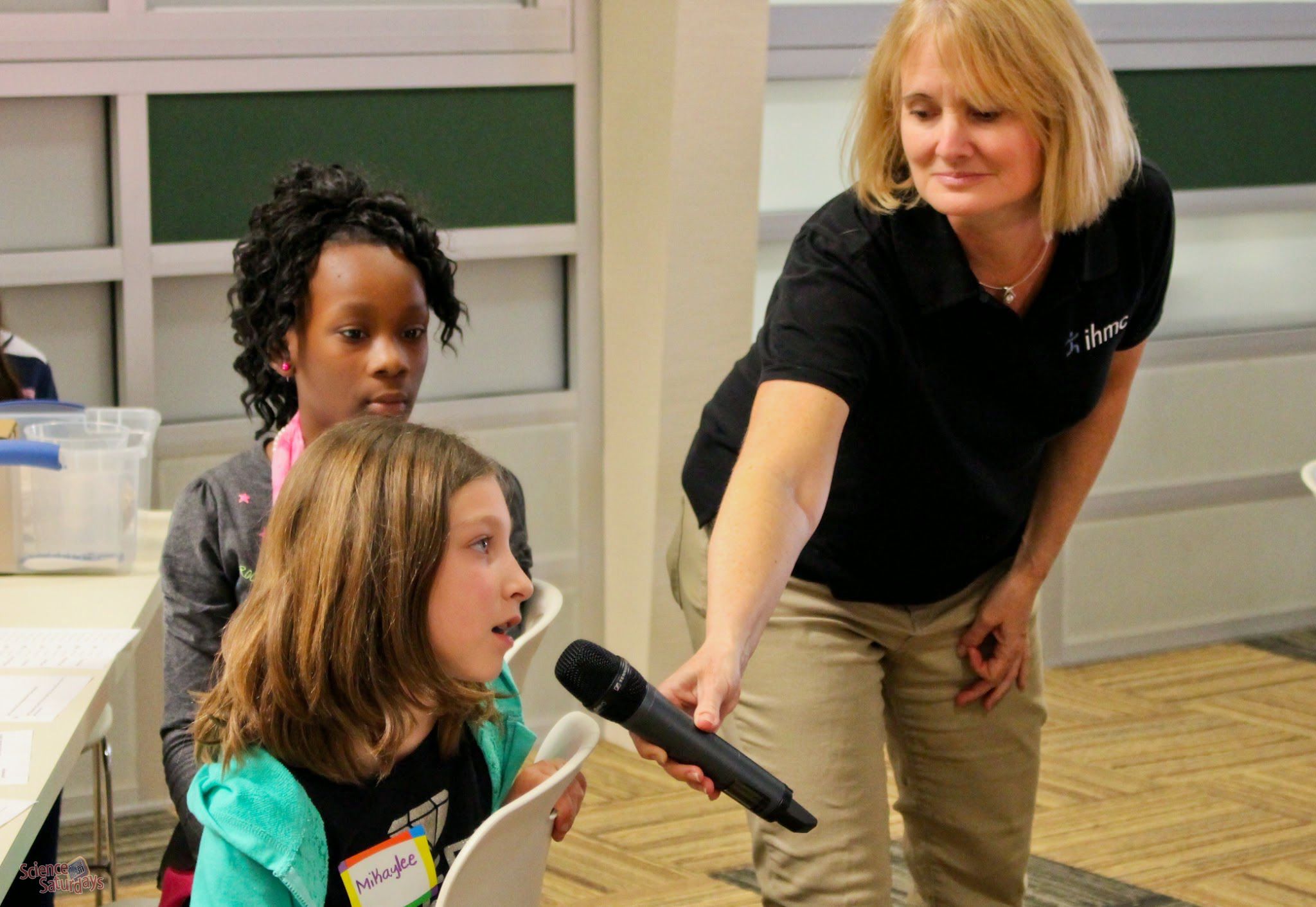
A spokesperson from each group was called upon to report their data to the class, one specimen at a time.
-
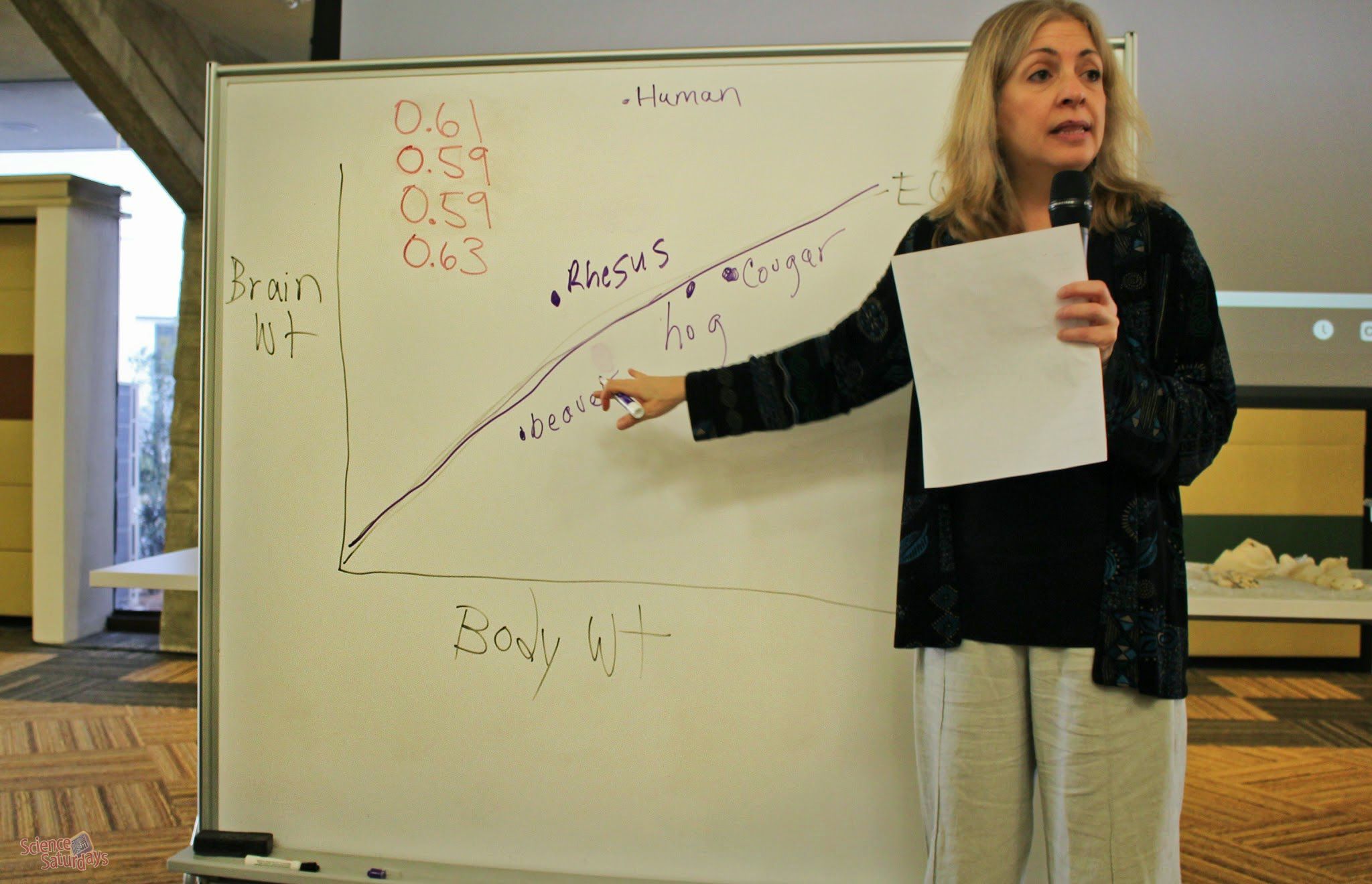
The EQ obtained by each group was recorded on the white board, and the average value was graphed for each species. Bottlenose dolphins have an EQ of approximately 4 - the highest of any animal other than humans, who have an EQ of 7. (The rhesus monkey has an EQ of approximately 2.2 , making it among the biggest brained animals that were evaluated by this group.)
-
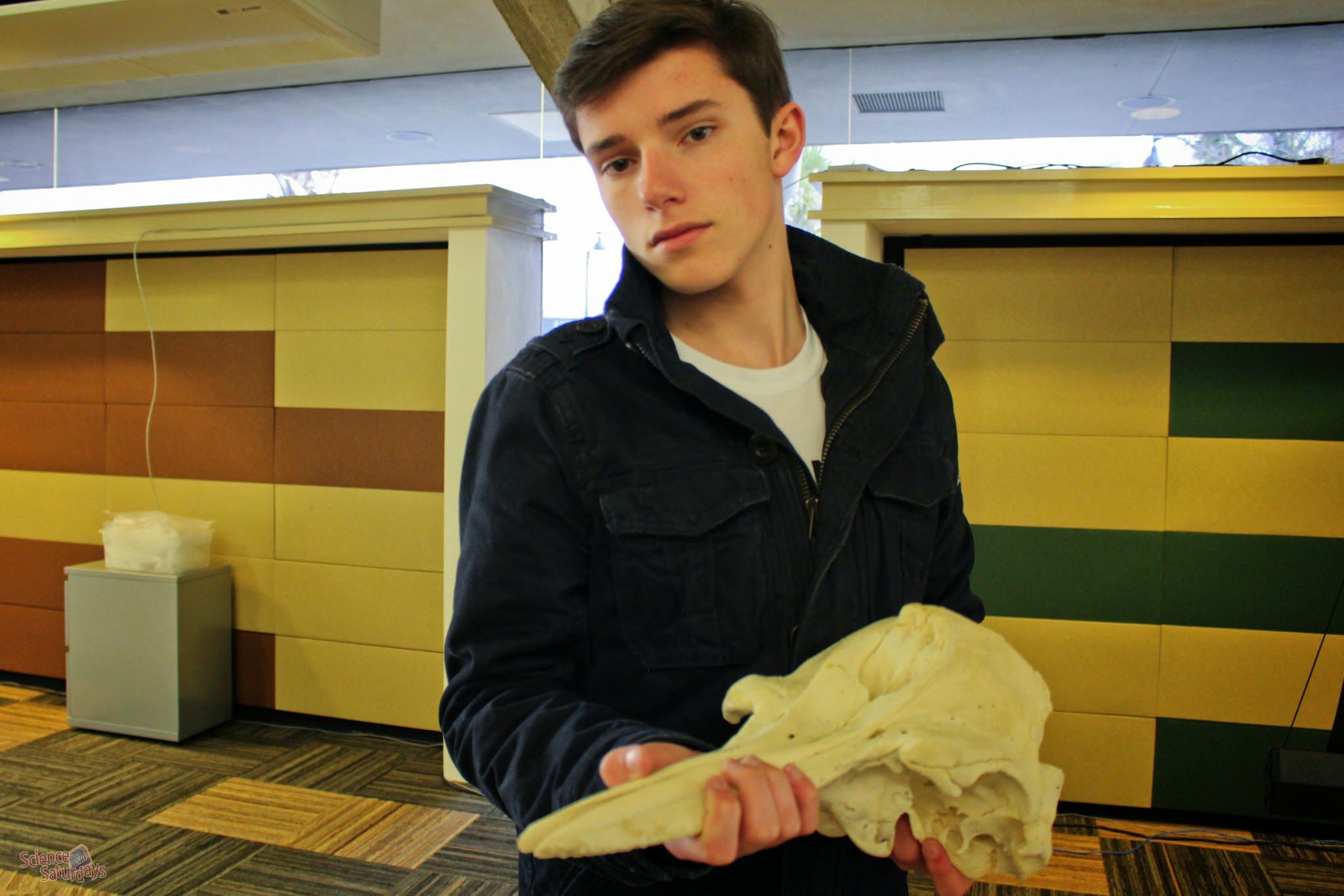
Photographer Grant shows us the dolphin skull. Normally our Science Saturday photos don't include many posed images, but at this event, students had so much fun posing with the different skulls that we include some of the best ones here.
-
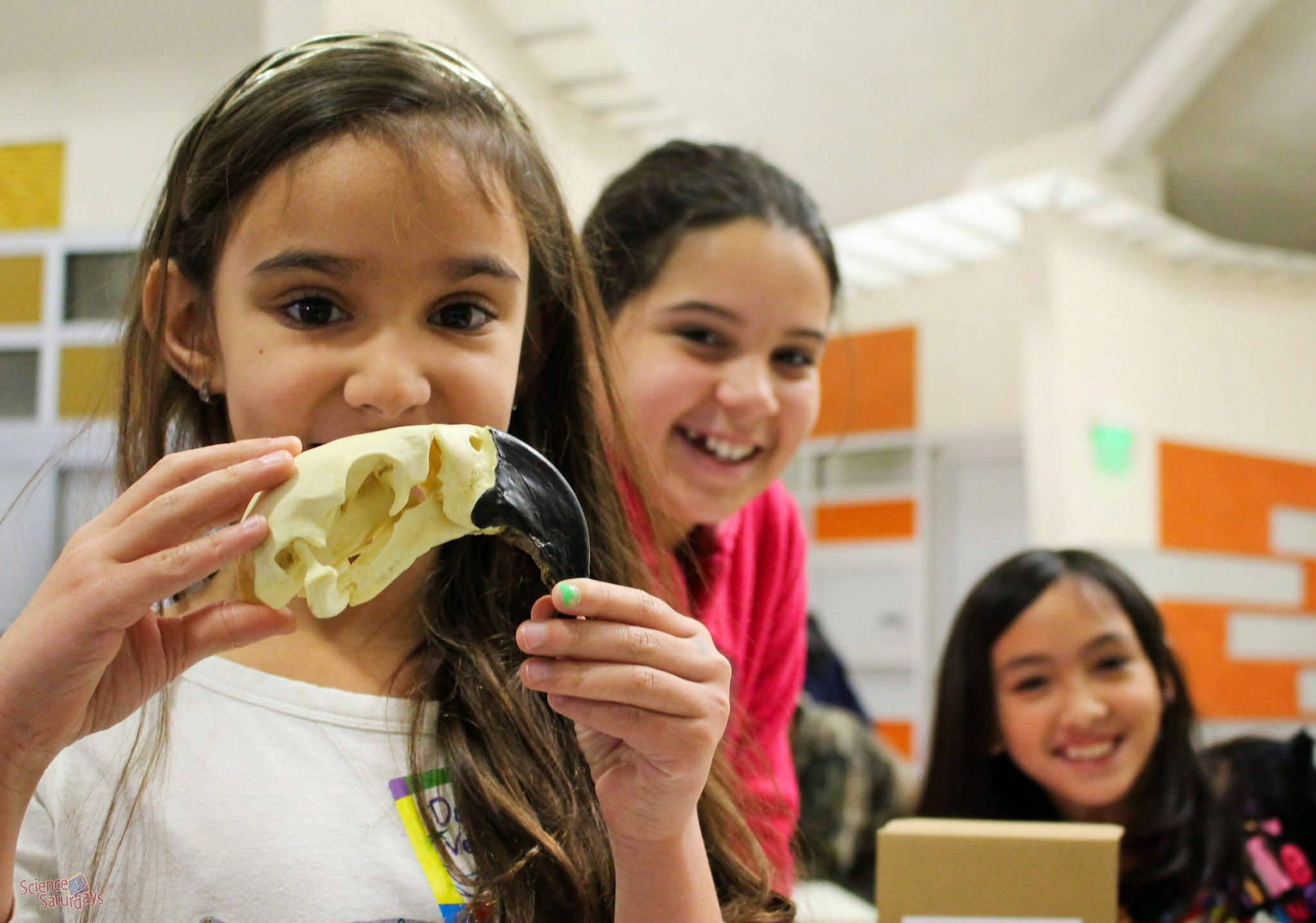
Two girls with the macaw skull. Check out the size of that beak!
-
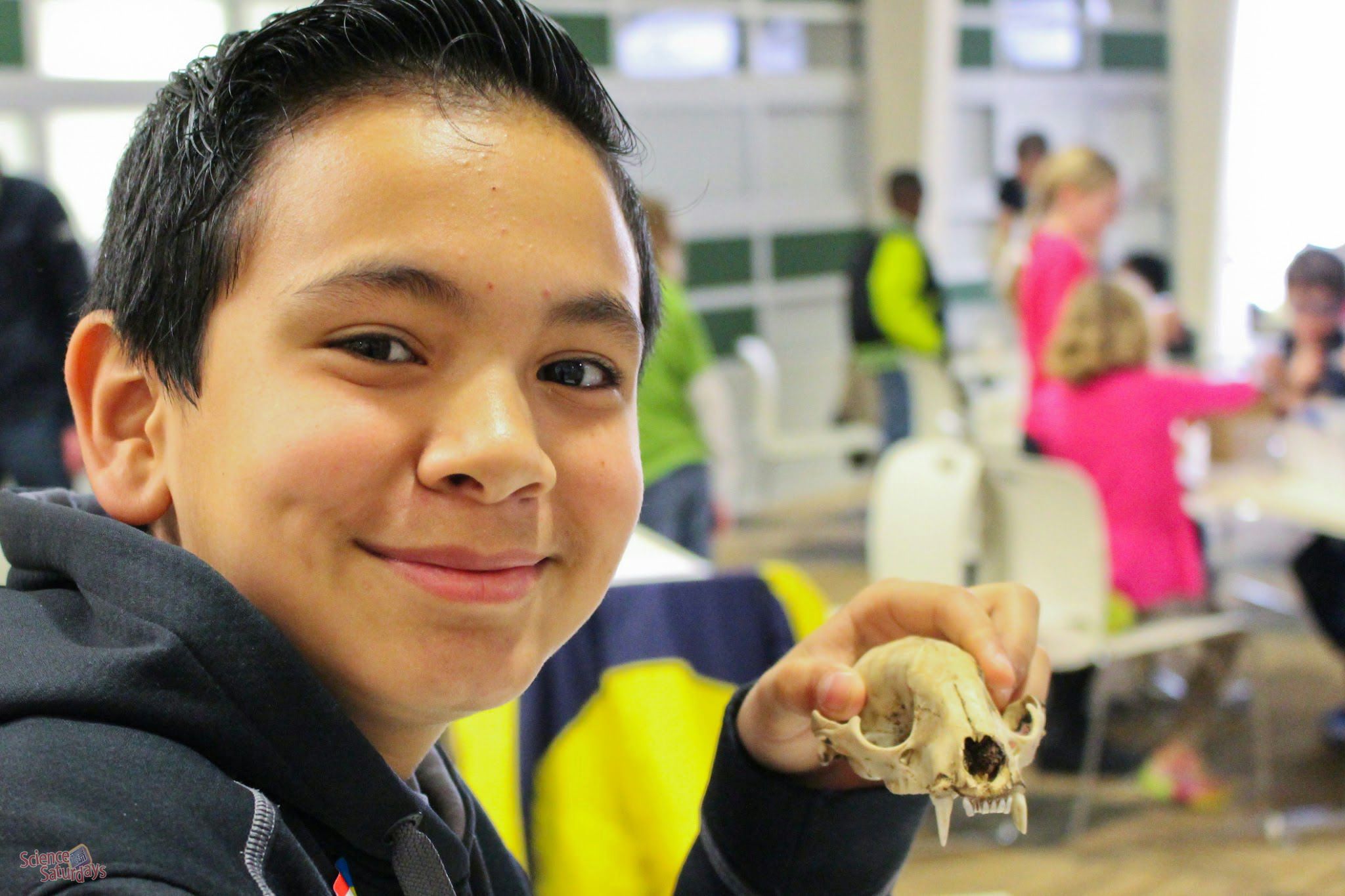
The bobcat skull.
-
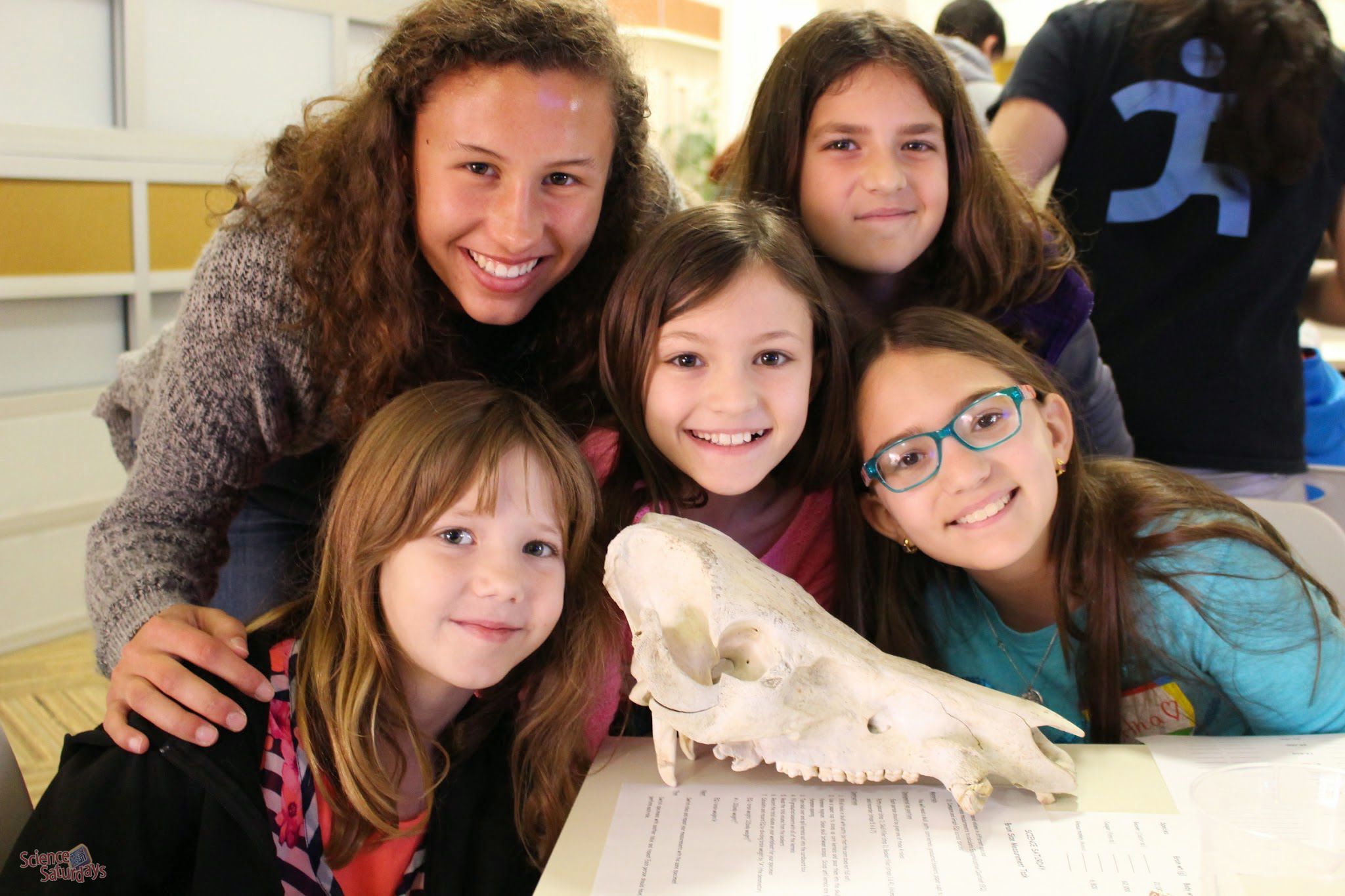
Volunteer Gabi and her group of students pose with the hog.
-
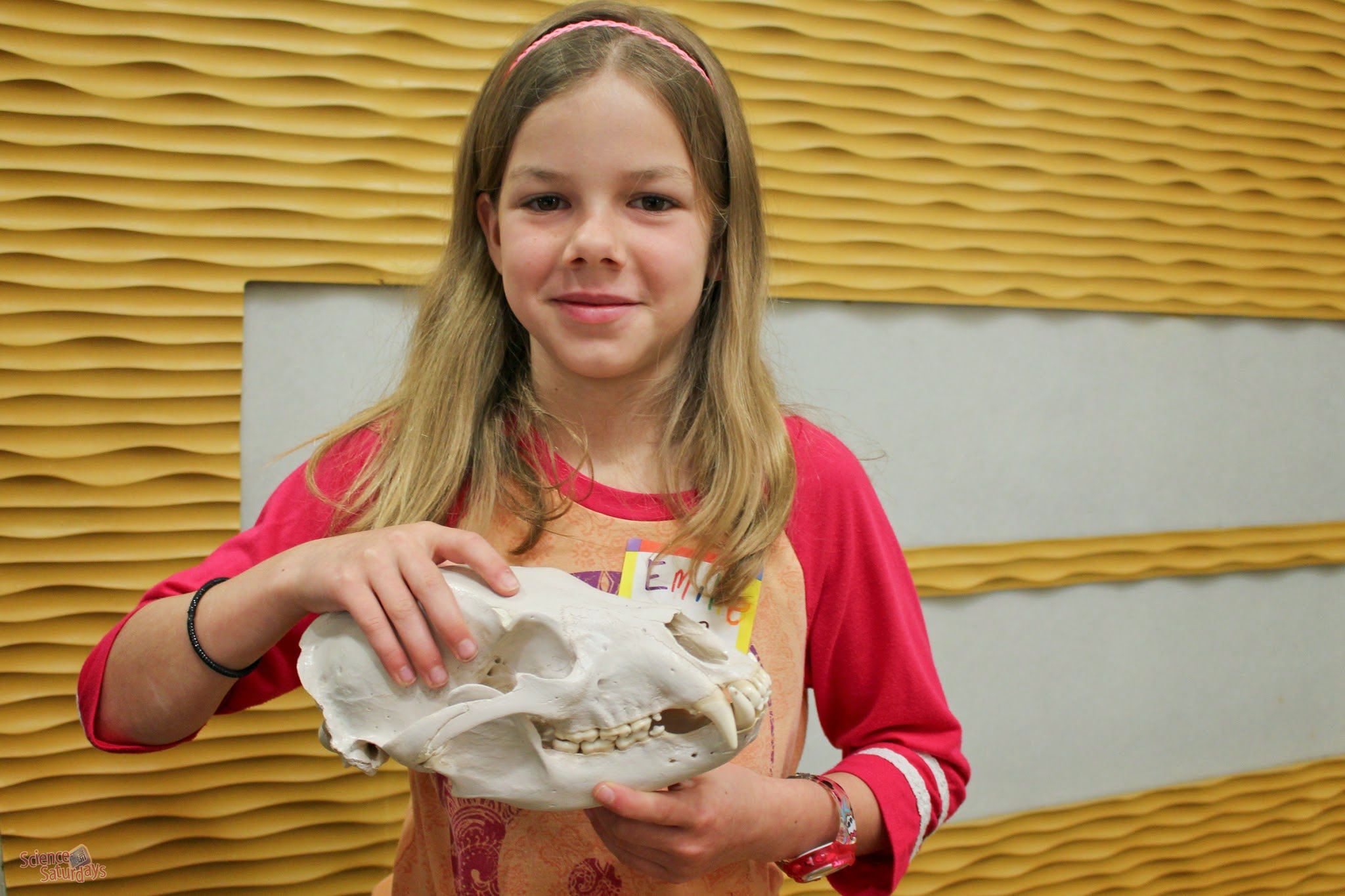
The black bear.
-
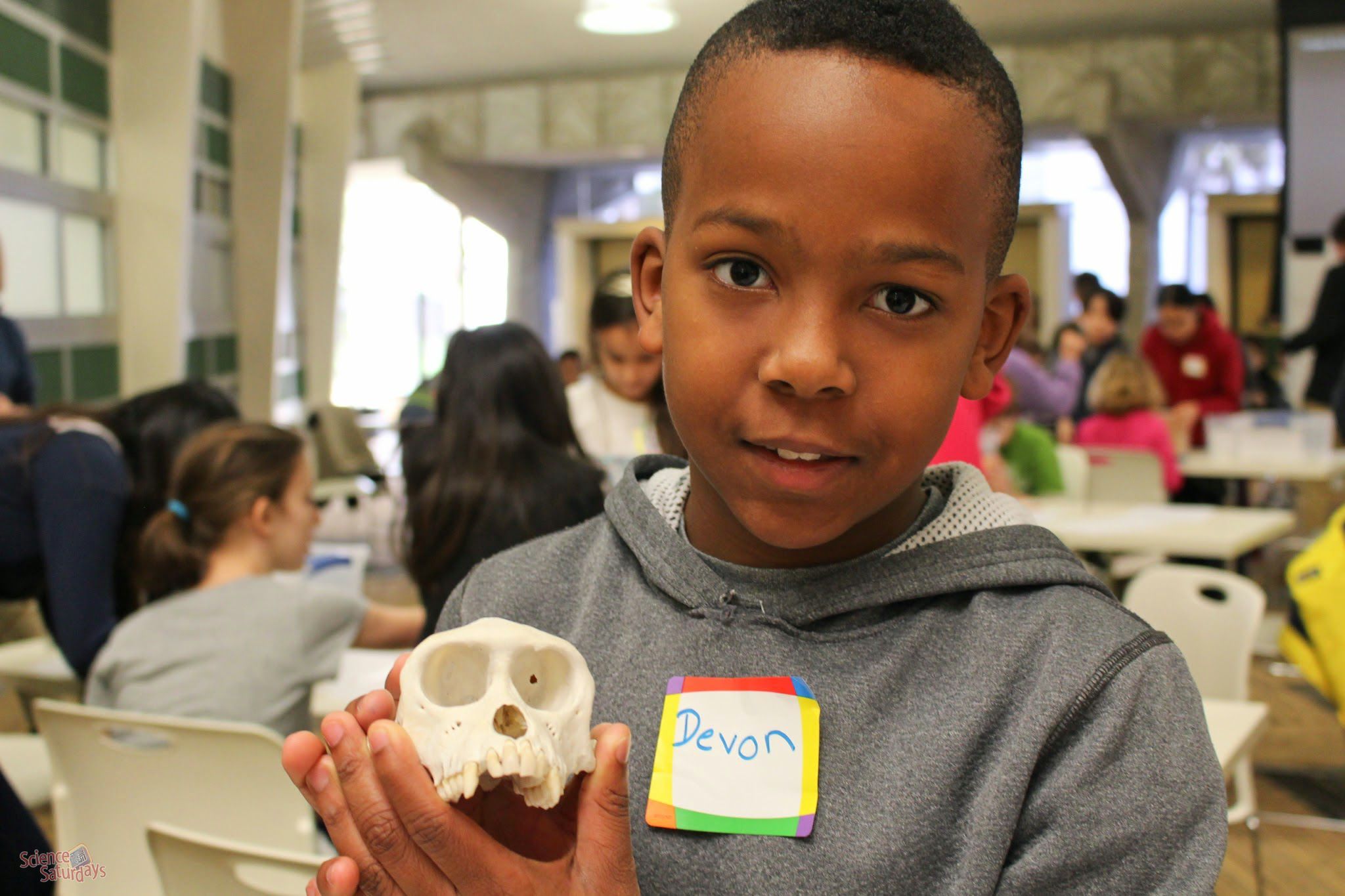
The rhesus monkey, whose skull closely resembles that of a human (other than its diminutive size).
-
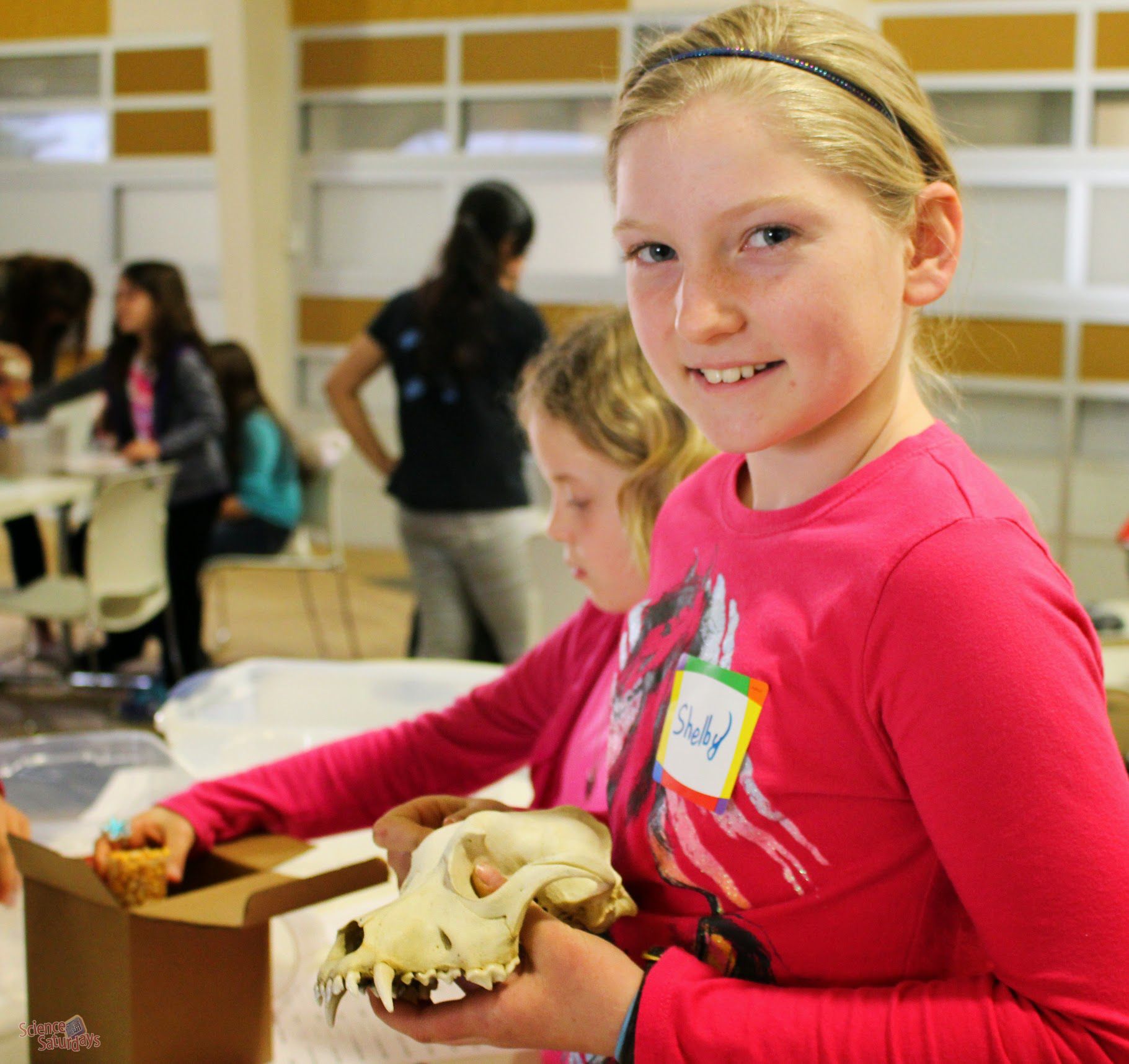
The dog.
-
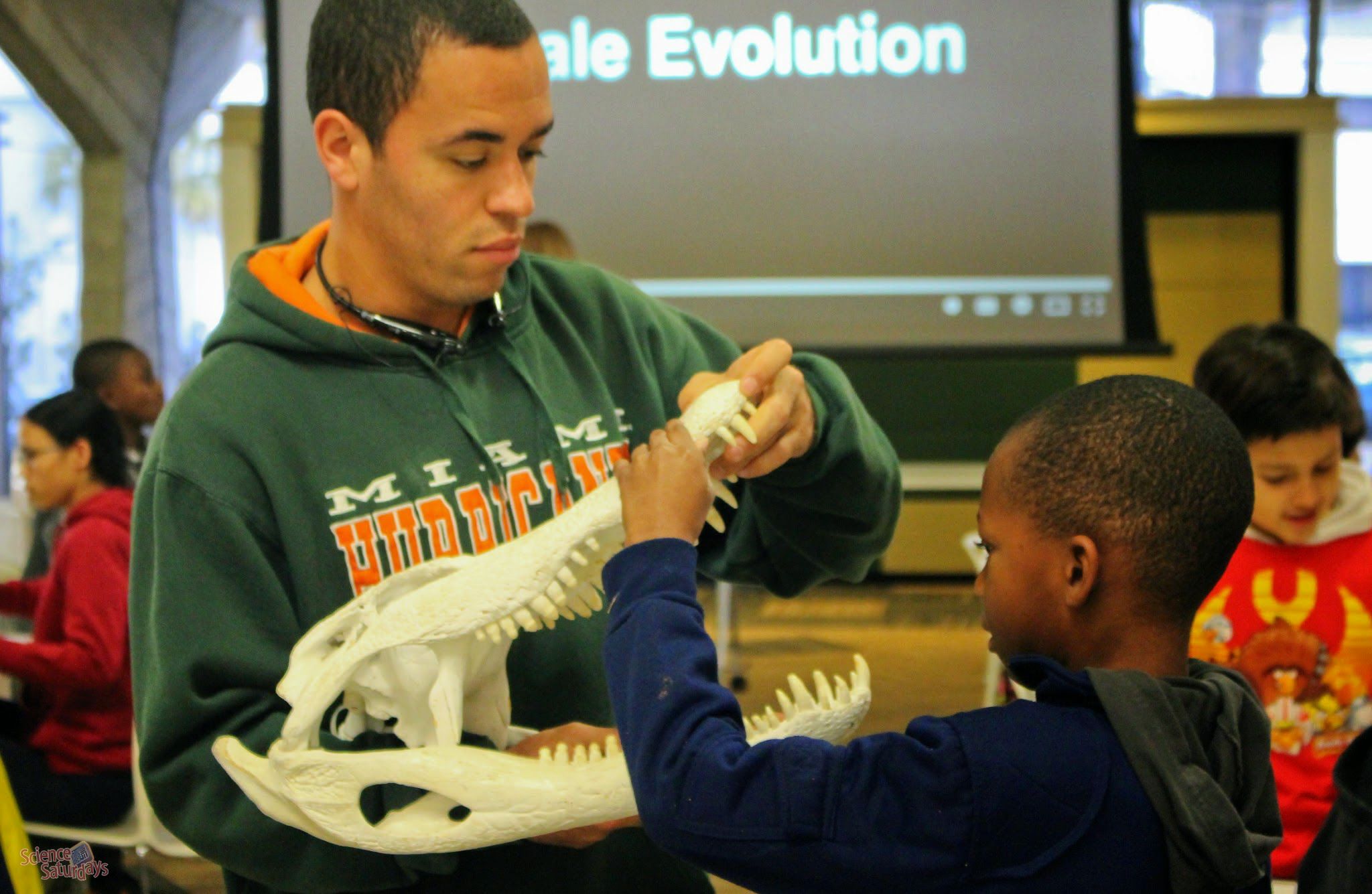
The alligator - who has by far the largest head and the tiniest brain of any of the animals we evaluated.
-
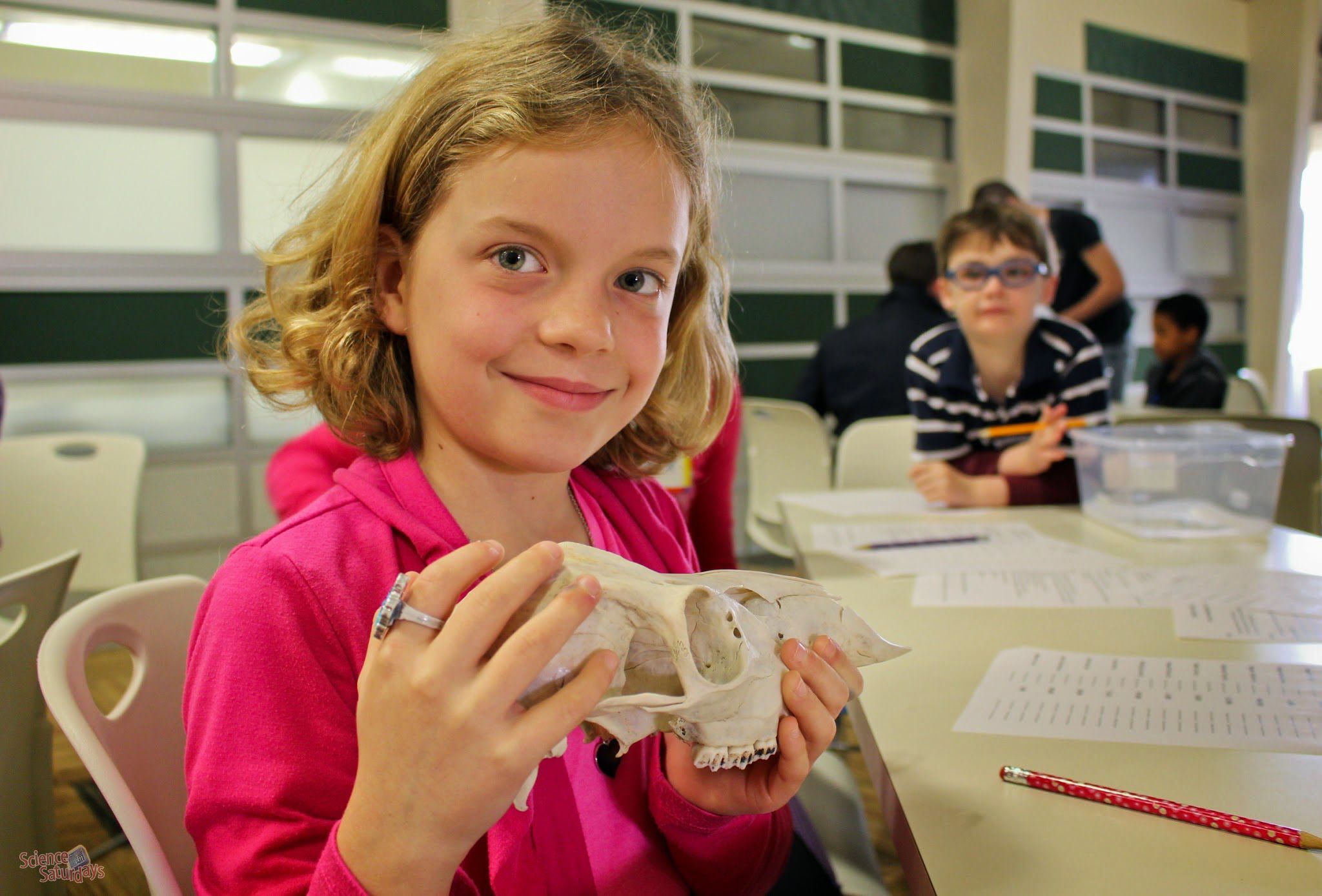
The deer.
-
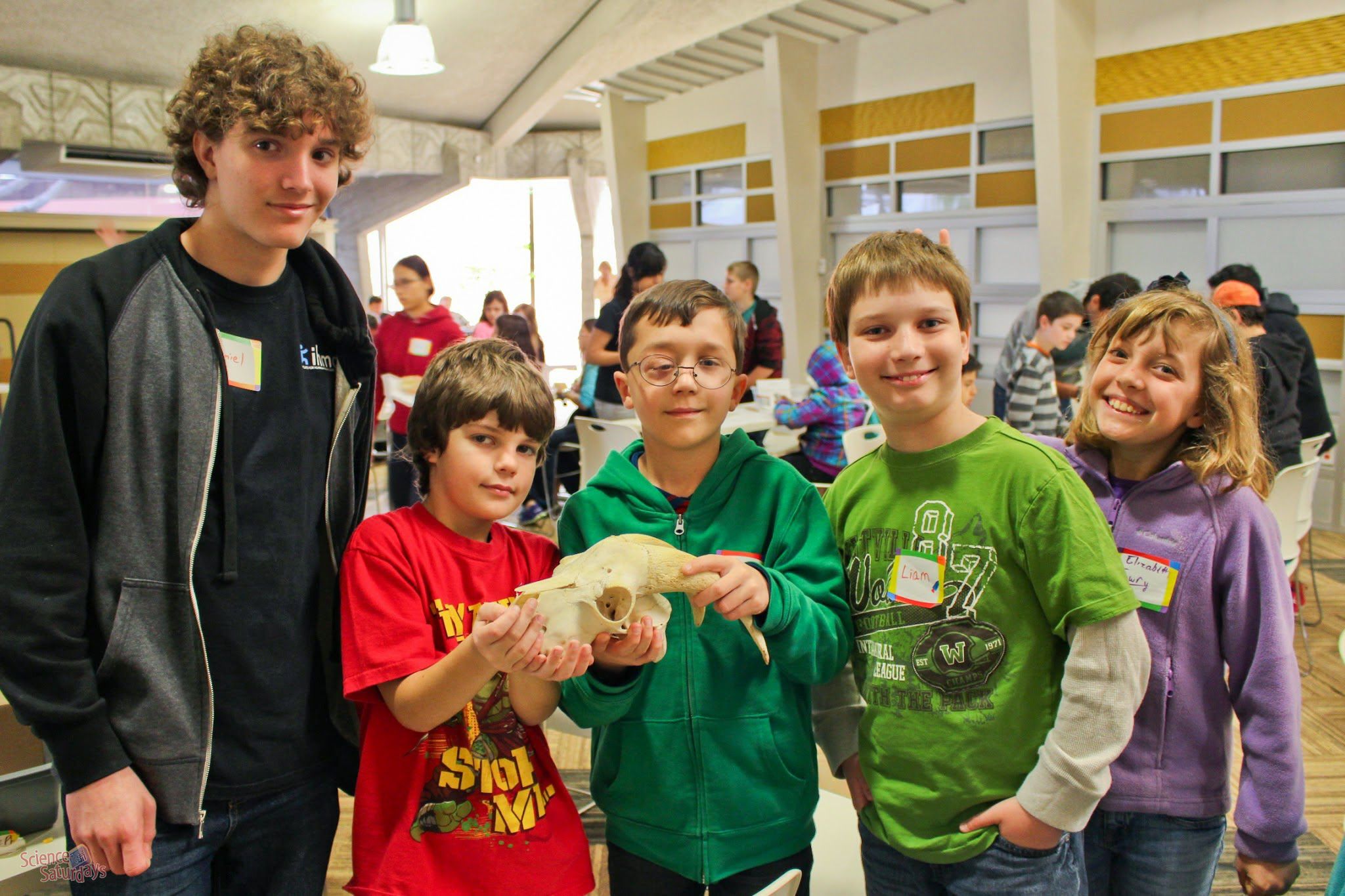
The goat!
-
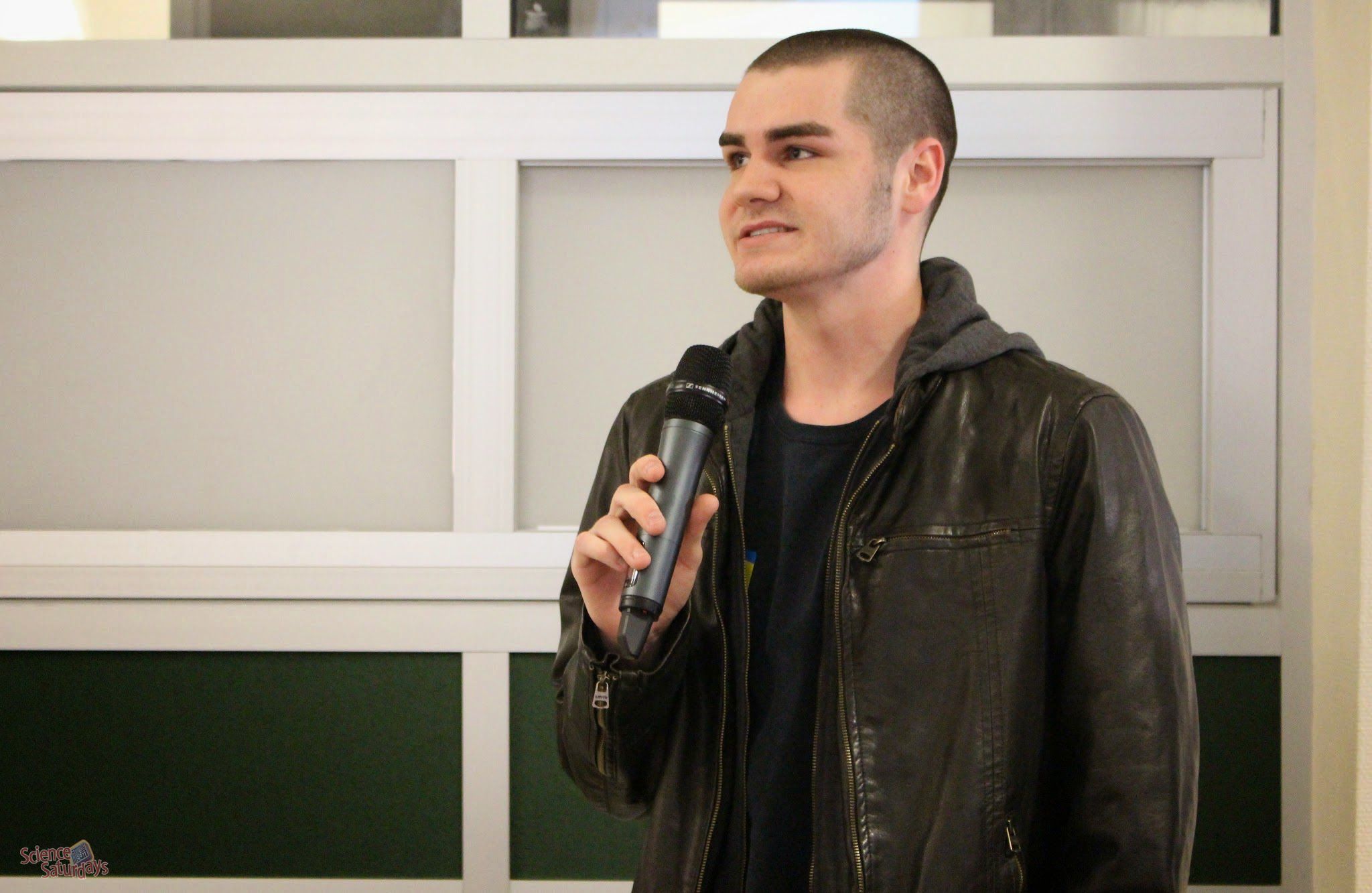
At the end of this event, volunteer Matt said goodbye, as this was his last Science Saturday before he graduates from Belleview High School in June. Matt been a regular volunteer at IHMC youth outreach events; he plans to major in biomedical engineering. IHMC wishes him well in his studies and we hope he will stay in touch.
-
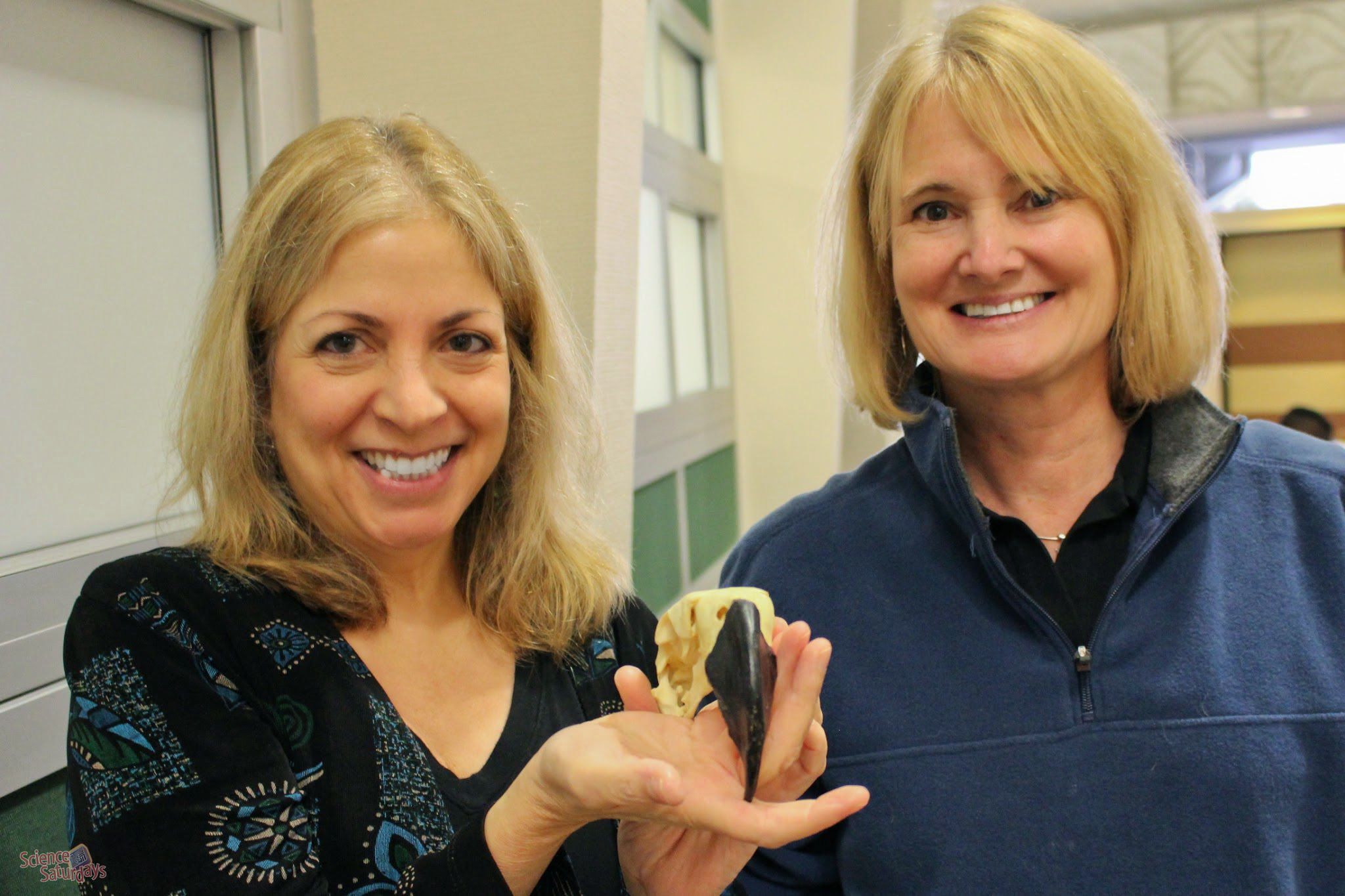
A big thanks to the sponsors and volunteers from Lori Marino, Ursula Schwuttke, and IHMC. Season sponsors include Lockheed Martin, Ron and Phyllis Ewers, and Oak Lane Farm. This session was also sponsored by Publix Supermarket Charities, University of Florida, and the Silver River Environmental Education Musem. And thank you, Lori, for your wonderful hands-on presentation about Dolphins, the Brainiacs of the Sea.

